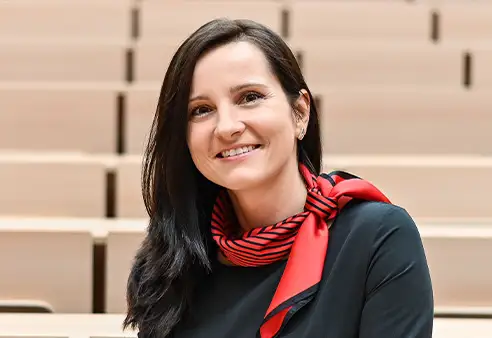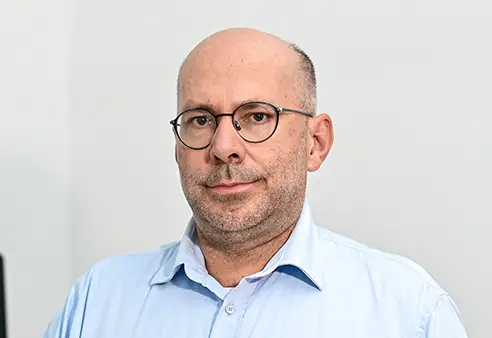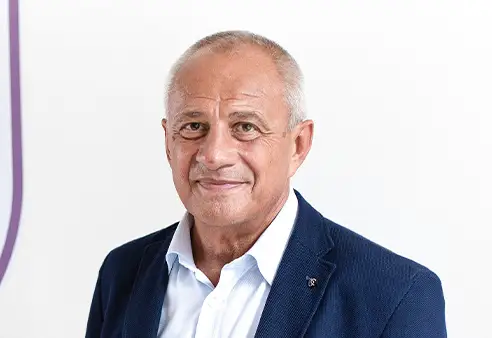When you mention real-time systems, few people know what they are. "You can try to imagine, for example, a telemetry system for monitoring the nuclear power plant's surroundings, which continuously collects data from mobile and stationary stations within a radius of thirty kilometres every three seconds and transmits them via radio modems. After evaluating them, it responds at given moments with appropriate actions. It integrates a number of technologies, interfaces and elements, while it must also meet several very specific conditions, "explains doc. Ing. Maximilián Strémy, PhD., from the Institute of Research of Advanced Technologies of the Faculty of Materials Technology of the Slovak University of Technology in Bratislava.
Even as a student, Maximilán Strémy designed software solutions for various private and public companies. He considers this his first encounter with applied development. After completing his engineering studies, he continued as a doctoral student in the field of automation, where he focused on control systems based on programmable logic controllers and related research and development tasks. Together with his colleagues, he developed the aforementioned telemetry system for monitoring the surroundings of the nuclear power plant, which is still used in Jaslovské Bohunice and Mochovce. This project served as a springboard for them to establish their own company, which implemented control systems and specific software applications.
When he was offered to lead the newly established Institute of Advanced Technology Research in Trnava, he left the company and returned fully to the academic environment, where he devoted himself to science and research. He has worked on several important projects in the field of automation, the newer ones include, for example, the use of drones for the transport of biological samples between hospitals and laboratories, in which several institutions and research teams participate.
"In the field of automated systems, data evaluation and development forecasting currently play an important role. This expertise can then be used in interdisciplinary research, "says Maximilián Strémy. As an example, he mentions a long-term joint project with the Slovak Medical University in the field of environmental pollution. Based on the analysis of blood samples of people living in the vicinity of the former Chemko Strážske plant, they developed models of the spread and exposure to PCBs.
Combining research, projects and pedagogical work is not easy, says Maximilián Strémy. However, he adds in one breath that he considers learning a leisure and fun activity. But without doing science, it wouldn't work. According to him, if research universities in Slovakia are to keep up with the ones abroad, it is necessary for professors to be continuously educated throughout their work. There is no better way of learning than through scientific work and research. When they pass on the knowledge gained in this way to students, it is for the benefit of society as a whole.
"I enjoy observing how students' eyes sparkle when they manage to solve a problem in practice based on the acquired theoretical knowledge. At one point, you can see such a peculiar expression of understanding on their faces. "So, that's how it works!" At that moment you need to let that spark flare up on its own. Do not underestimate students and trust that they can cope on their own, \“Maximilián Strémy describes his pedagogical experience.
The best way to arouse students' interest in science is to involve them in research projects. This is how a prototype of an award-winning wheelchair was created, which a handicapped person can control with their thoughts, based on monitoring of electrical potential in relation to brain activity. Students and doctoral students of the faculty worked on the Think and Go project for two years, received a grant and mastered basic research and development methods. Initially, they had to face two basic tasks - adapting the wheelchair to microprocessor control and then developing software for processing and evaluating EEG signals.
"I had the opportunity to try out how applied and basic research work. As a doctoral student at the Institute of Applied Informatics, Automation and Mechatronics, I worked on projects that resulted in a functional system, application, software, patent or prototype, which was a standard applied research and development. For several years now, I have been part of an institute focused on materials science and interdisciplinary research tasks, that is rather focused on basic research. It's as if I've moved into a different world - the world of accelerators and ions, which was a bit of a sci-fi experience for me, "says Maximilián Strémy and admits that it was quite a change for him and it took him a while to adapt. But he is grateful for this experience and adds that he enjoys basic research more and more.



